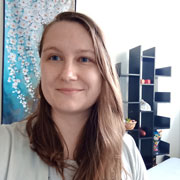By Lauren Smith
Last updated: 02 April 2024 & medically reviewed by Dr. Kimberly Langdon
Psilocybin, the active ingredient in magic mushrooms, has been explored as a novel treatment for mental health conditions including depression, anxiety, addiction, anorexia, PTSD, and OCD. The therapeutic benefits of psilocybin are thought to emerge from its suppression of activity in the brain’s default mode network (DMN) and its promotion of neuroplasticity.
Key takeaways:
The revaluation of psilocybin and other psychedelics as a treatment for mental health conditions has emerged from growing frustration, among doctors and patients, about the inadequacies of conventional antidepressants.
Neuroimaging has revealed that classic psychedelics (psilocybin, LSD, mescaline, and DMT) decrease activity in the default mode network. It may even ‘reset’ it.
Psilocybin makes the brain more plastic and induces mystical, profound experiences, both of which make people more receptive to therapy and the formation of new, more positive thought patterns.
-(1)-guide-detail.jpg?v=1666257149)
Table of contents
Toggle table of contents ↑ ↓Table of contents:
What is psilocybin therapy?
Psilocybin therapy is the use of the psilocybin compound for medical rather than recreational purposes. Psilocybin is being investigated as a treatment for chronic pain and migraine and cluster headaches but most interest has surrounded its use in conjunction with psychotherapy for mental health conditions.
The revaluation of psilocybin and other psychedelics as a treatment for mental health conditions has emerged from growing frustration, among doctors and patients, about the inadequacies of conventional antidepressants. SSRIs and SNRIs, which work by increasing the brain’s supply of serotonin, take several weeks to work and must be taken daily, with attending side effects. They’re also ineffective for up to 30% of people with depression.[1]
New models of depression
The serotonin model of depression that undergirds the use of SSRIs and SNRIs is now being questioned and replaced with more complex theories.[2] Research into psychedelics is helping scientists elaborate some of these theories because the compounds demonstrate powerful, fast-acting, and long-lasting effects on depressive symptoms.
New theories of depression center on the brain's default mode network (DMN), which links the medial prefrontal cortex (MPC), posterior cingulate cortex (PCC), and inferior parietal lobe (IPL). This network is active when we turn our focus internally, on the self and our memories. It’s whirring during rumination, self-reflection, and self-criticism.
The DMN is also thought to be the origin of the ego or the self in narratives we tell and believe about ourselves. Hyperactivity in this network has been associated with depression, anxiety, stress-related conditions, OCD, and chronic pain.[3]
Psychedelics’ effect on the brain
Neuroimaging has revealed that classic psychedelics (psilocybin, LSD, mescaline, and DMT) decrease activity in the default mode network. It may even ‘reset’ it. Psilocybin has been shown to increase connectivity between the default mode network and other networks in the brain, often reduced in people with depression. This allows for communication across the brain and what psychedelics researcher Robin Carhart-Harris calls entropy.[4] In this "entropic brain," new neural linkages can be formed, writing over old negative patterns. Fresh insights can be taken on board, extending the benefit of the drug for months.
These theories correspond with users' accounts of psychedelics making them feel at one with the universe (ego death), giving them a new perspective on their problems, and sometimes inducing ego death and near-death experiences.
Psychotherapy can then help patients make sense of these psychedelic experiences and insights and integrate the revelations into their life.
Dr. Elzabeth Shuler, A life coach and psychedelic-assisted therapy advocate had this to say about the potential benefits of psychedelic therapy;
Who is psilocybin therapy intended for?
In clinical trials and pilot studies, psilocybin therapy has shown benefits for:
people with depression [5]
people with alcohol use disorder [6]
smokers trying to quit [7]
people with cancer experiencing anxiety and depression [8]
people with OCD [9]
people with migraine headaches [10]
Research is also being conducted into using psilocybin to treat, among other things:
anorexia [12]
substance use disorders, including addictions to opioids, cocaine, and methamphetamine [13]
cluster headaches [14]
chronic pain [15]
Related: How long do magic mushrooms stay in your system?
What happens during psilocybin therapy?
Psilocybin therapy is performed under the supervision of a therapist. Usually, it’s a three-part process.
Preparation
The patient and therapist develop a trusting therapeutic relationship over one or more meetings. The therapist gets to know the patient’s difficulties and may help them set intentions for the psilocybin experience. For example, “I want to stop using opioids” or “I want to process a traumatic experience.”
Treatment
The treatment is usually performed in a comfortable room with dimmed lights, plants, paintings, and a couch or bed for the patient to recline in. The patient receives a dose of synthetic psilocybin powder in a capsule. They wear an eye mask and listen to calming music to help them turn their intention inwards.
The therapist remains present throughout the session to minimize the patient's anxiety and the risk of a bad (frightening) trip. The treatment lasts six to eight hours.
Integration
After the treatment, the patient is encouraged to discuss what they experienced. The therapist guides them to draw insights and ideas from the experience and apply them to their situation. Therapy may be ongoing.
The benefits of psilocybin therapy
Psilocybin makes the brain more plastic and induces mystical, profound experiences, both of which make people more receptive to therapy and the formation of new, more positive thought patterns.
It can also turn down the activity and reset the brain's default mode network. DMN is associated with rumination and self-criticism, which play roles in OCD, depression, and anxiety.
Because psilocybin interacts with serotonin molecules, repeated dosing may change the binding activity of serotonin receptors to alleviate mental illnesses such as OCD and depression.[16]
Psilocybin can also promote sustained feelings of well-being, happiness, and connectedness to others and the wider universe.
These effects can mean dramatic relief from the symptoms of mental illness and addiction.
Medical advisor PsyD

In one study, adults with treatment-resistant depression were given two doses of psilocybin alongside supportive psychotherapy. During the four-week follow-up, 71% of participants had a clinically significant symptom reduction after one and four weeks. At one week, 58% of participants reported remission, all but one of whom remained in remission after four weeks.[17] These results held up when those participants were followed up across a year. 12 months after the psilocybin doses, 75% were still reporting improvement and 58% reported remission of their depression.[18]
In another study, adults with alcohol use disorder given two doses of psilocybin drank heavily on 9.7% of days during the 32-week follow-up, while the control group drank heavily on 23.6% of the days.[19]
Related: Mixing psilocybin and other drugs
The history of psilocybin therapy
- 1957: Swiss chemist Albert Hofmann isolates psilocybin from the mushroom Psilocybe Mexicana.[20]
-
1958: Psilocybin is synthesized for the first time.
-
1960: Sandoz Pharmaceutical, Hofmann’s employer, begins marketing 2mg psilocybin pills under the name Indocybin as an aid to psychotherapy.[21]
-
1960-63: Harvard psychologists Timothy Leary and Richard Alpert order psilocybin from Sandoz for use in research. In one trial, the Concord Prison Experiment, 32 prisoners were given psilocybin-assisted psychotherapy with the aim of reducing recidivism.
-
1963: Leary and Alpert are fired from Harvard over their experimentation with psychedelics.
-
1965: Amid public outrage and tougher laws against psychedelics, Sandoz stops supplying psilocybin for research.[22]
-
1971: As part of the backlash about the 1960s counterculture, psilocybin is made illegal in the U.S. and worldwide. The federal Controlled Substances Act makes psilocybin a Schedule 1 drug. Scientists and drug developers who want to study it must get the approval of the Drug Enforcement Administration (DEA) and the FDA. Psilocybin was also made a Schedule 1 internationally under the United Nations Convention on Psychotropic Substances the same year, with use limited to scientific research and trade closely monitored. Research into psilocybin and other psychedelics all but stops.
-
2001: Researchers at the University of Arizona launched the first study giving psilocybin to a patient population in years, researching its use for OCD. Several subjects report marked improvement in OCD symptoms.[23]
-
2010s-20s: More clinical trials using psilocybin are undertaken. So far, 18 have been completed and 99 are active, examining psilocybin’s potential to treat everything from cocaine and methamphetamine addiction to phantom limb pain.[24] Several centers for psychedelic research are founded at major universities, including Johns Hopkins, UC Berkeley, and Imperial College London.
-
2018-19: The FDA designates psilocybin as a “breakthrough therapy” for treatment-resistant depression and major depressive disorder. This classification expedites the development and review of drugs for serious conditions and is given where preliminary clinical evidence suggests the drug is a substantial improvement over available treatments.[25]
-
2020: Voters in Oregon approve the therapeutic, supervised use of psilocybin, with access due to begin in 2023.[26]
-
2022: A letter sent on behalf of the U.S. Health Secretary suggests that the Biden administration “anticipates” psilocybin and MDMA will be approved as treatments for depression and PTSD, respectively, by 2024.[27]
Other psychedelics used in therapy research
Interest in psilocybin therapy has flowered as part of a renaissance of research into psychedelics, after decades of criminalization and in the wake of the widespread legalization and medicinal use of cannabis.
LSD
LSD has largely been trialed as a treatment for alcoholism, with conflicting results. Its lengthy effects (up to 12 hours) make it unwieldy for clinical use.[28]
DMT
DMT, another classic psychedelic, is favored for its short-acting effects: under a half hour, compared to six to eight hours for psilocybin. It's being researched as a treatment for depression and addiction.
MDMA
MDMA, a stimulant with psychedelic effects, was designated a breakthrough therapy for PTSD in 2017 and is poised for full FDA approval in the next two years.
Ketamine
Ketamine, a dissociative anesthetic with psychedelic effects, is a Schedule III drug widely used for anesthesia. It can therefore legally be prescribed by doctors “off-label.” Ketamine infusions are available to treat depression, anxiety, OCD, PTSD, substance use disorders, bipolar disorder, suicidal ideation, chronic pain, postpartum depression, and other conditions.[29] As of 2022, a nasal spray of ketamine derivative esketamine is the only psychedelic drug approved by the FDA to treat a mental health condition.

